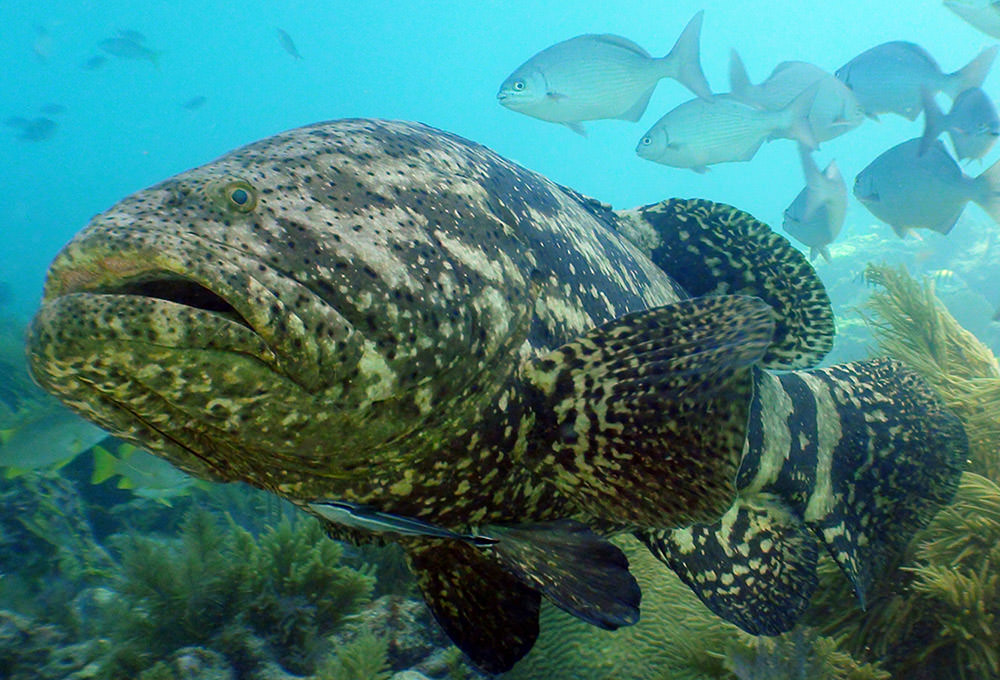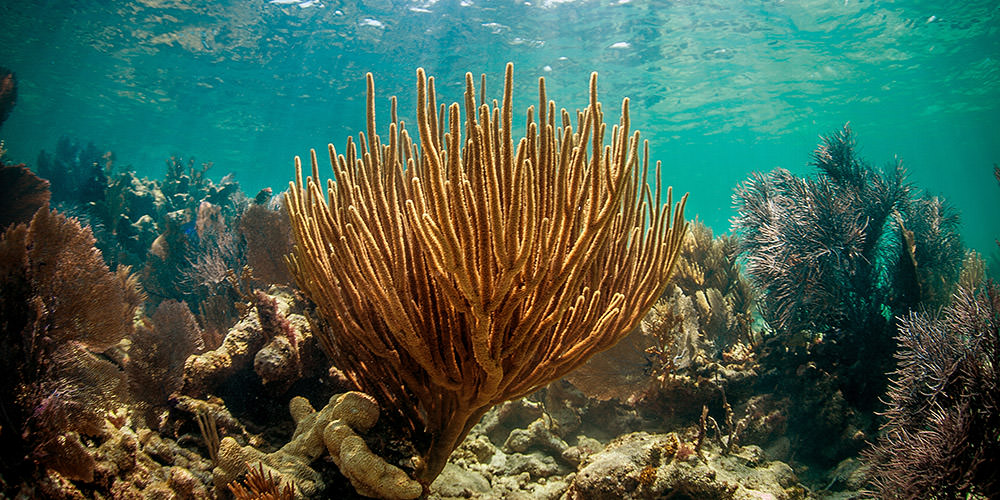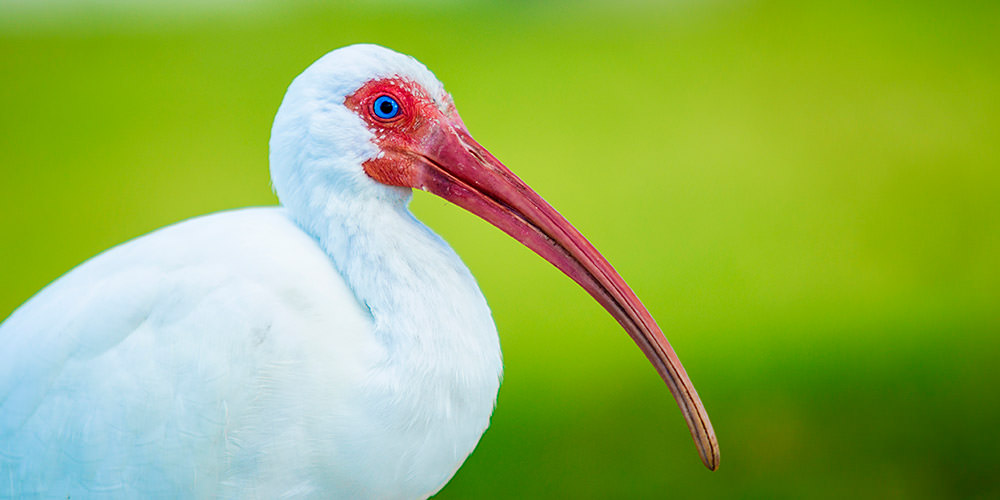Fish and Wildlife
The Florida Keys region is home to a diversity of fish and wildlife that is essential for ecosystem health, ecological function, recreation, and commercial fishing. These animals depend on healthy coral reef, seagrass, mangrove, and other habitats throughout their lives, and are vulnerable to exploitation, climate change, habitat degradation, and variable water quality.
Fish

The Florida Keys region supports a broad diversity of tropical and subtropical fish and shellfish species. A rigorous, collaborative field survey has monitored fish communities since 1998. The 2011 Condition Report concluded that relative abundance across a spectrum of species has been substantially altered, with large-bodied fish being among the most affected. It also found that heavy recreational and commercial fishing pressure continues to suppress biodiversity. Research finds marine reserves effective in promoting fish size, abundance, and sustainability. Permanent resident fish populations benefit most from no-take zones with the level of protection provided related to reserve size, configuration, habitat, and the species life history. Understanding the movement behavior and home range of an exploited species is critical for effective spatial management.
Performance evaluations of Western Sambo Ecological Reserve
Many reef fishes form spawning aggregations. When fish assemble in higher than usual densities to reproduce, they are particularly vulnerable to exploitation. Understanding the location and timing of fish aggregations and the habitats that support them is important for ensuring they are adequately protected.
Marine reserves affect fish populations and size
Corals

More than 45 species of stony corals and 35 soft corals live in Florida Keys waters. Seven coral species are listed as threatened under the Endangered Species Act. Reef-building corals are sensitive to a variety of factors, including sudden and prolonged changes in seawater temperature, disease, ocean acidification, harmful algal blooms, and poor water quality. Large-scale coral bleaching has progressively become more widespread and severe. Currently, the Florida Reef Tract is experiencing a historic disease event with stony coral tissue loss disease affecting half the reef-building species. Coral reefs have been in decline in Florida and the Caribbean since the 1970s. Restoration efforts include coral rescue and nurseries, innovative techniques to speed coral growth and maturity, and holistic approaches to habitat and species rejuvenation.
Sponges
Sponges occur on reefs, shallow hardbottom communities, seagrass beds, and on mangrove prop roots. Besides filtering large amounts of water, sponges in nearshore hardbottom habitat provide critical shelter for myriad invertebrates and fish. Catastrophic weather events in 1991, 2007, 2013, and 2016 resulted in widespread cyanobacteria blooms and subsequent large-scale die-offs of sponges and other invertebrates. Sponges were the most impacted marine life species by wave action and sedimentation associated with Hurricane Irma in 2017. Sponge nurseries support restoration efforts.Lobster

Caribbean spiny lobster are found throughout mangrove, shallow hardbottom, seagrass, and reef habitats and are one of the most economically important commercial fisheries. The lobster population in the Florida Keys benefits from larvae that originate elsewhere in the Caribbean and are transported by ocean currents. The annual loss of thousands of traps poses economic and environmental concerns including lost catch and the accumulation of debris from traps that can remain in the ocean for an extended time.
Stone crab
Stone crab Inhabiting nearshore environments during most of their lives, stone crabs are also vulnerable to changes in water chemistry including acidification. The stone crab fishery has been experiencing overfishing since 1997, according to the Florida Fish and Wildlife Conservation Commission, and, in any given season, all the claws available to the fishery are harvested due to the excess effort.
Shrimp
The commercial shrimp fishery, comprising brown shrimp, white shrimp, pink shrimp, royal red shrimp, and rock shrimp, is one of the most important fisheries in the Florida Keys. Young shrimp spend from two to seven months in the Florida Bay seagrass nursery grounds before moving into the Gulf of Mexico off the Dry Tortugas. Measures to protect these stocks and their habitat include closed areas in federal waters, bycatch reduction devices, and the prohibition on trawling in certain coral areas.
Sea urchins
Sea urchins were historically one of the most important invertebrate grazers on coral reefs in the Florida Keys, helping control the abundance of harmful algae. The massive die-off of long-spined sea urchins that began in the Caribbean in 1983 caused cascading effects in coral reefs throughout the region. Other urchins, crabs, and herbivorous fishes have partially filled the important role on coral reefs, but the proliferation of macroalgae continues to contribute to the decline of coral cover.
Marine mammals

The Florida Keys are within the seasonal geographic range of a variety of marine mammals. Thirteen species of whales, seven species of dolphins, and the West Indian manatee either reside in or travel through the sanctuary at some point in their lifetimes. Bottlenose dolphins reside in the area year round.
Birds

The Florida Keys host more than 285 species of birds, many of which are seabird or shorebird species. The Florida Keys National Wildlife Refuges are managed, in part, for the diversity of migratory and resident bird species that use these habitats. It is critical to the health of these species that select foraging, nesting, loafing, and staging areas are protected from human disturbance.
Turtles
The highest densities of sea turtles in the Gulf of Mexico region are observed in waters surrounding the Florida Keys. Nests are found throughout the island chain. The Quicksands area west of the Marquesas Keys, Mooney Harbor within the Marquesas, and the Lakes Passage have been found to be important foraging grounds for green, loggerhead, and hawksbill sea turtles due to the continuous seagrass beds. All marine turtles are protected by the Endangered Species Act.
Sea turtles in Florida Keys National Marine Sanctuary
Crocodiles
The American crocodile historically reside in the mangrove and estuarine areas of South Florida, including the Florida Keys, and is federally listed as endangered. Crocodiles forage opportunistically, eating fish, snakes, crabs, turtles, birds, and small mammals.

